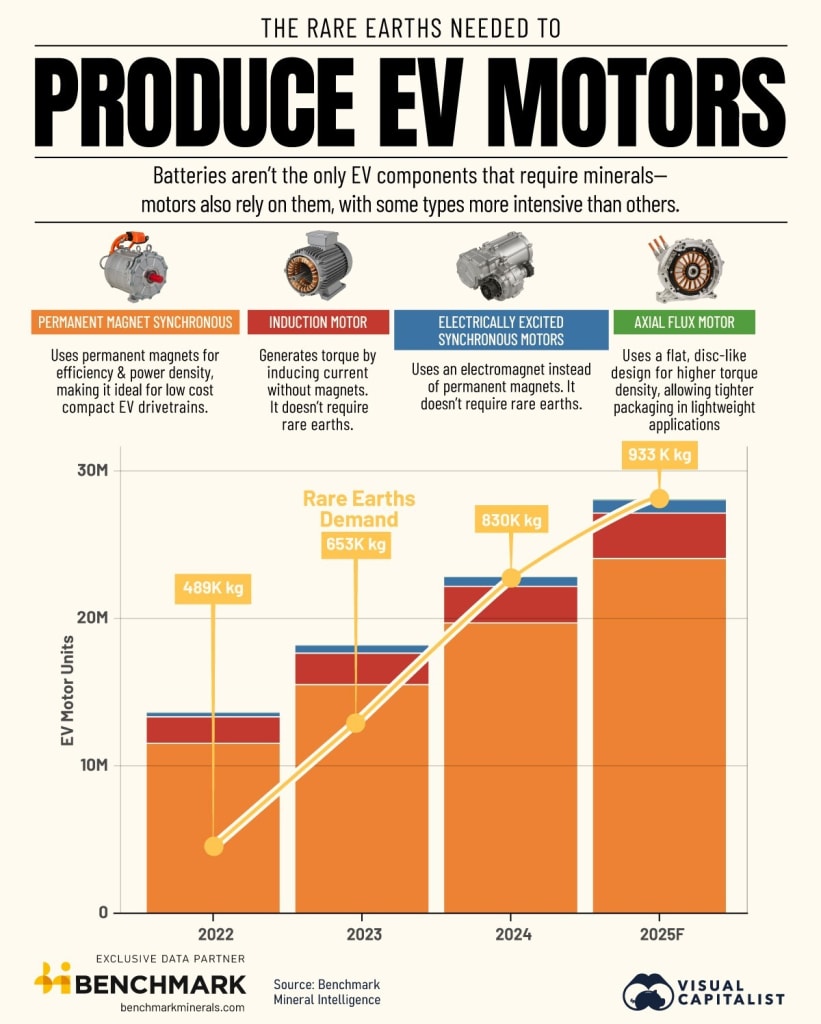As EV sales have risen, the need for EV motors has also grown, translating into increased demand for rare earths. In 2024, over 830kt of rare earth demand was tracked within the EV motors market, a 27% increase from the previous year. In 2025, this demand is expected to increase 12% to 933kt.

How are rare earths are used in EV motors?
There are four main types of EV motors in the market: Permanent Magnet Synchronous Motors (PMSMs), Asynchronous/Induction Motors, Electrically Excited Synchronous Motors, and Axial Flux Motors. Of these, only PMSMs and Axial Flux Motors both use rare earth permanent magnets.
In 2024, these two motor types accounted for over 86% of the EV motor market. The most common magnets used are made by combining neodymium with iron and boron to create neodymium-iron-boron (NdFeB) magnets. Additional rare earth elements, such as dysprosium and terbium, are often added to help the magnets retain their magnetic strength (coercivity) under high temperatures. As a result, the bulk of rare earth demand from EV motors is driven by these three elements: neodymium, dysprosium and terbium.
How will rare earth demand from EV motors evolve?
While some OEMs have signalled intentions to transition away from PMSMs to magnet-free motor designs, PMSMs have firmly established themselves as the longstanding dominant technology in the EV motor industry. While other new designs such as Hybrid Excited Permanent Magnet Motors aim to reduce rare earth content in electric motors; PMSMs are expected to remain a cornerstone of future developments, ensuring that rare earth demand from EV motors continues to grow.
More information
For more information on the EV motors market see here, or for more information on the rare earth market see here

 Back to News
Back to News